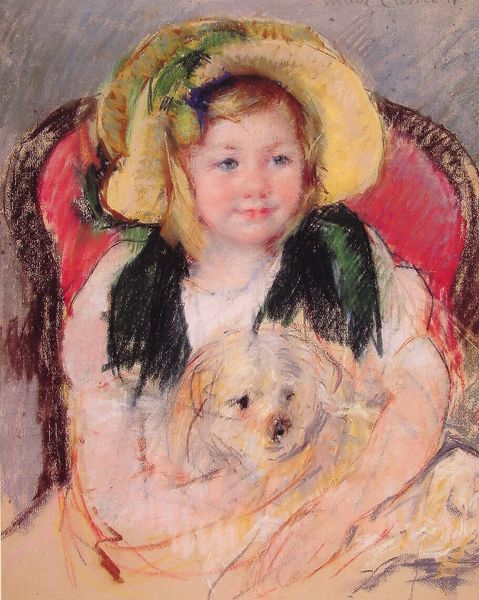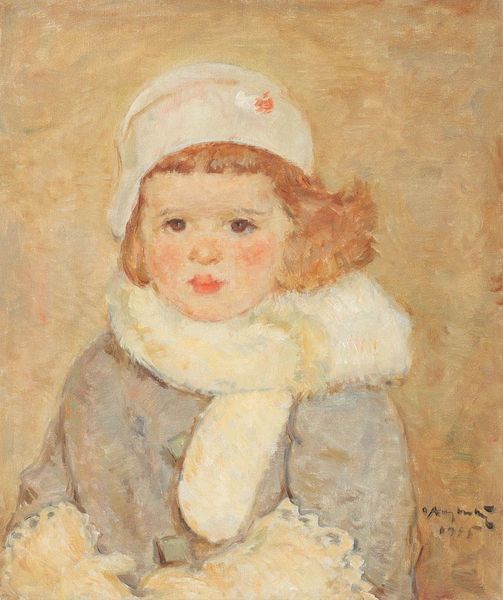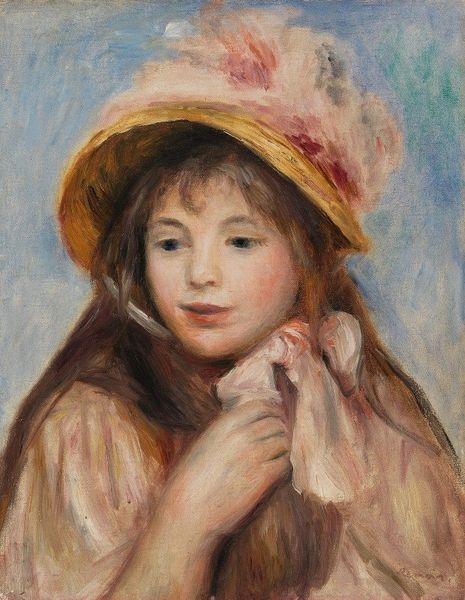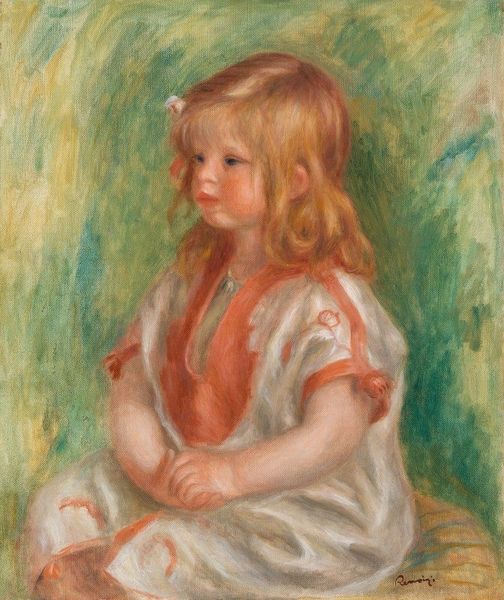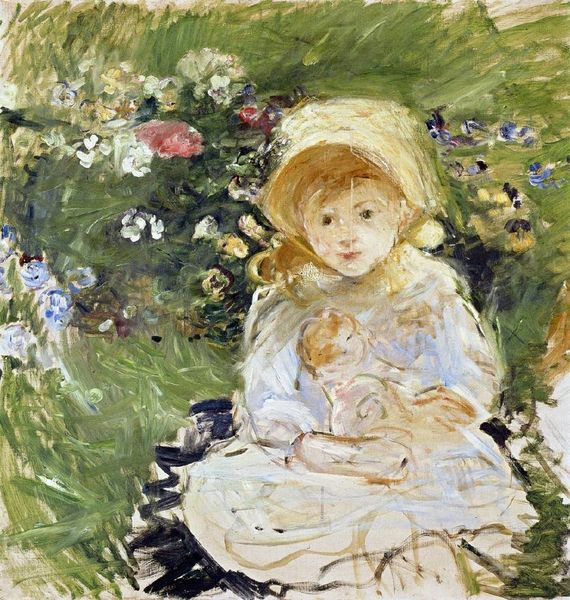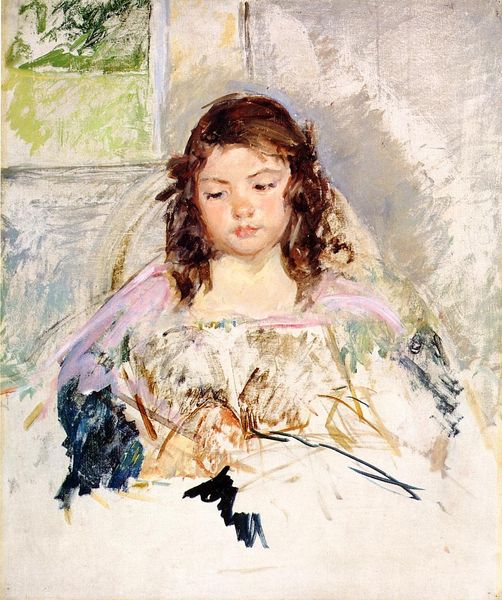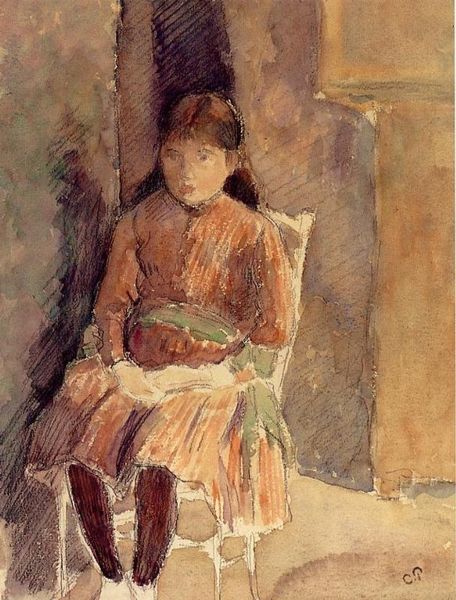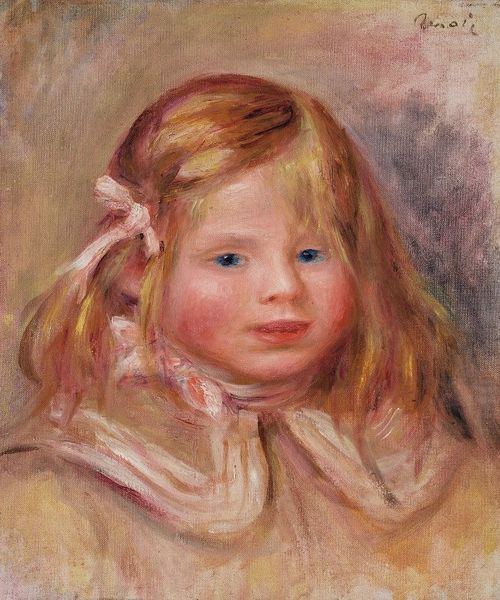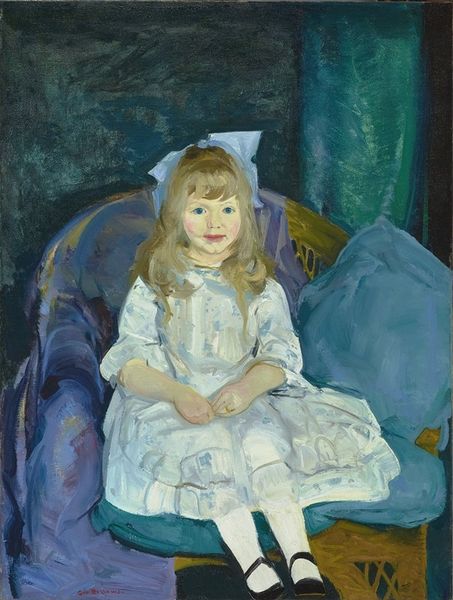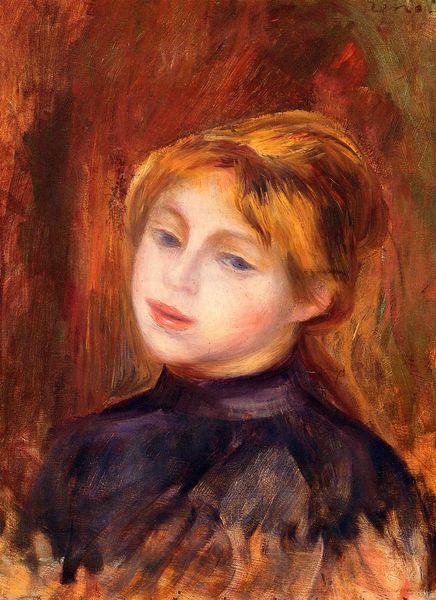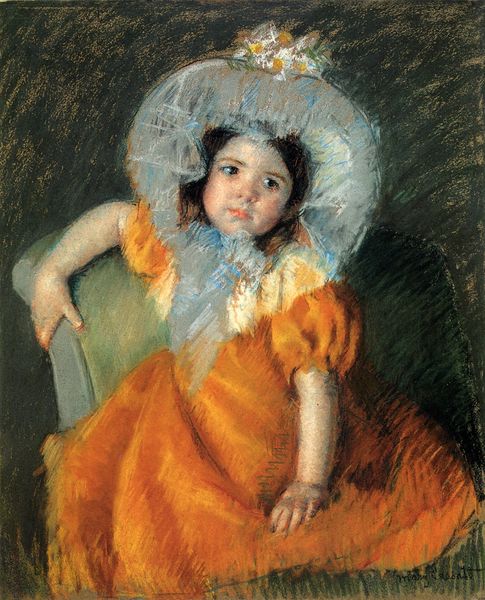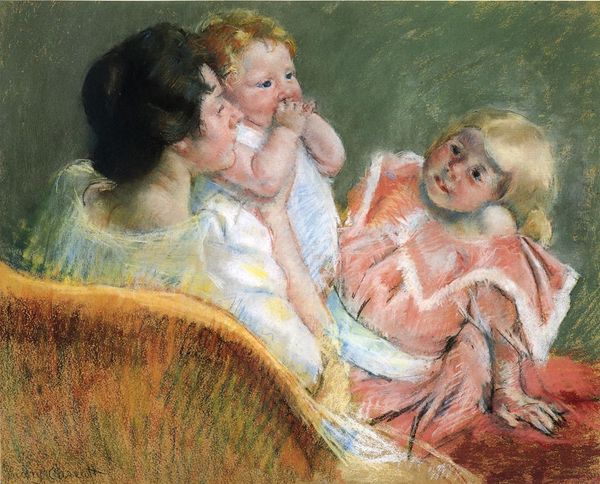
oil-paint, impasto
#
portrait
#
oil-paint
#
figuration
#
oil painting
#
impasto
#
neo expressionist
#
genre-painting
#
lady
#
fine art portrait
#
realism
Copyright: Octav Angheluta,Fair Use
Editor: This is "Fetița cu fundițe roșii" by Octav Angheluta, made with oil paint and impasto. It’s captivating—almost like a glimpse into a fleeting moment. I am curious to know, how do you see the piece? Curator: Given my emphasis on materiality, I’m immediately drawn to the impasto technique Angheluta employed. Notice how the thickness of the oil paint isn't just about representing form, it's about the very *labor* of painting itself. How does this emphasis on the material, on the application of paint, speak to a challenge of traditional art boundaries, moving towards something akin to craft? Editor: So you are less focused on the subject, the young girl, and more on the painting's substance? I was more drawn to her expression and the intimacy it evokes. Curator: The 'who' is certainly present, but a materialist reading necessitates looking at the societal context in which art like this is created and consumed. Think about the resources required, the physical act of painting – each stroke representing time, effort, the economy of art-making itself. Are there societal clues about that when looking at the lady, in that context? Editor: Now that you mention it, the seemingly simple choice of subject – a child, seemingly from a modest background, depicted with care – might also be read as a reflection of the social and economic landscape in which Angheluta was working. A departure from traditional, often aristocratic, portraiture. Curator: Precisely. And beyond that, we could explore the social implications inherent in painting such subject matter with oil, as oil requires specific craftsmanship skills and it would also signal the subject's cultural positioning. Where do we place this? Editor: This is certainly interesting; I had been focusing more on aesthetic impressions, but thinking about the making process gives me a different appreciation for it. Curator: Indeed. Hopefully it also pushes us to understand that it is imperative that every artifact, whether considered fine art or a humble craft, can become a testament of time.
Comments
No comments
Be the first to comment and join the conversation on the ultimate creative platform.

